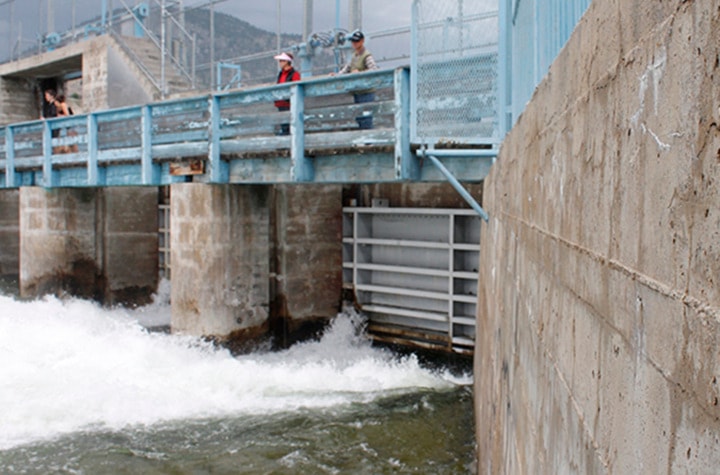The water level in Okanagan Lake is swishing right around its targeted maximum, and a rainy spell could push it even higher.
As of Saturday morning, the lake level was at 342.46 metres above sea level, two centimetres below the so-called full pool mark at which officials from the responsible government ministry try to keep it.
“I’d like to stress that’s a target that we like to reach, but sometimes we go over that,” said Des Anderson, whose heads the Ministry of Forests, Lands and Natural Resource Operations’ pubic safety and protection office in Penticton.
“A slight deviation from that number should be insignificant to most people, (but) there are some (homes) that were built below the proper flood construction level, and they would begin to experience seepage from ground water.”
Anderson said the lake typically reaches full pool in late June, but a spell of hot weather in May hastened the spring melt.
“What that does is it gives us less time to get water out. So the lake is reaching this (full pool) benchmark early,” he explained.
As it stands, the team is letting out as much water from the lake as it can.
The dam at the south end of the lake in Penticton was discharging water at a rate of 64 cubic metres per second as of Saturday morning. That’s slightly above its design discharge capacity, and regulations in place to prevent damage downstream mean the release can’t be bumped up further.
Anderson said, however, that as long as the Okanagan escapes heavy rain, officials are confident they can keep the lake level under control.
“It looks manageable, but really it’s tough to say, because these past few years we’ve had quite a bit of precipitation in June. That’s the caveat.”
Meanwhile, a June 1 bulletin from the B.C. River Forecast Centre noted the snowpack in the Similkameen basin was at just 35 per cent of normal. For the Okanagan-Kettle basin, it was pegged at 76 per cent of normal.
“With below normal snow packs and an earlier snow melt in many regions for this time of year, summer low-flow periods are expected to occur earlier than normal,” the bulletin said.
Areas of concern include most of the Southern Interior.
“Lower summer flows are expected in these regions if spring and summer weather is near normal or drier (and) hotter than normal,” it concluded.
Environment Canada is forecasting sunny weather for the week ahead.
Anderson cautioned people to remain vigilant around the Okanagan River, the banks of which could be undercut in natural areas due to the current high flow.
